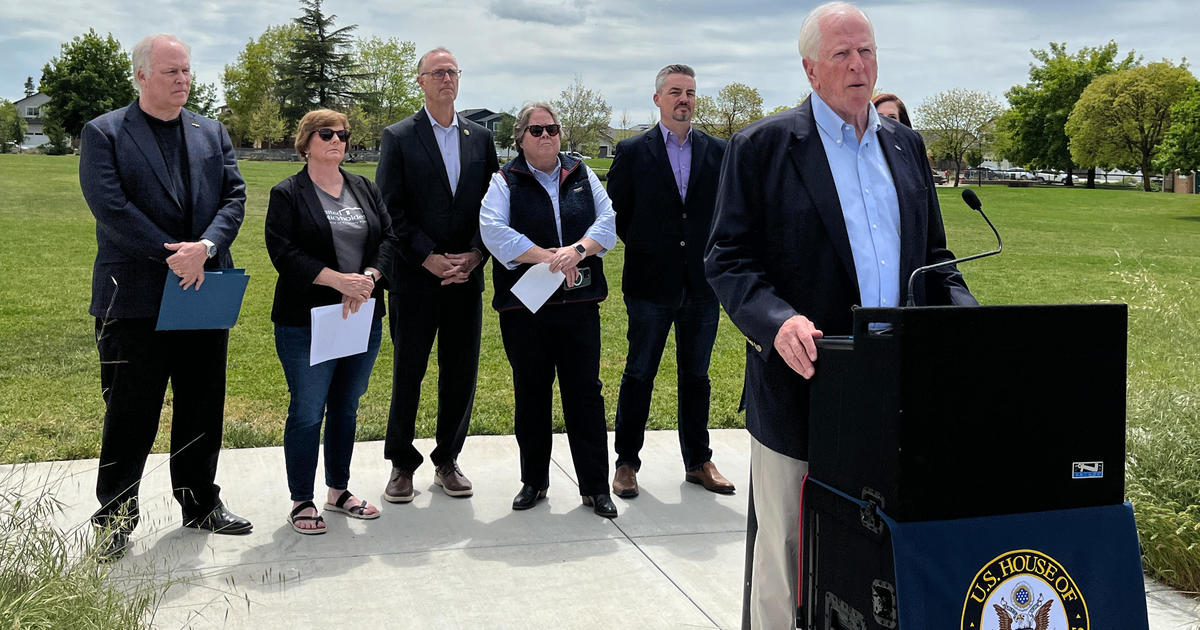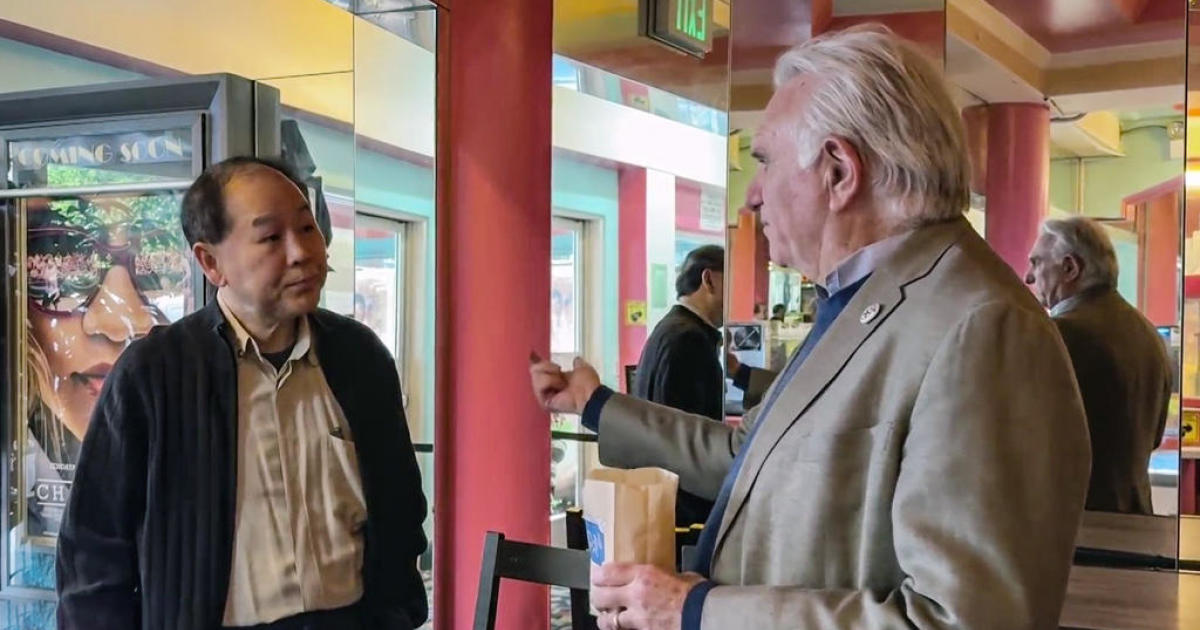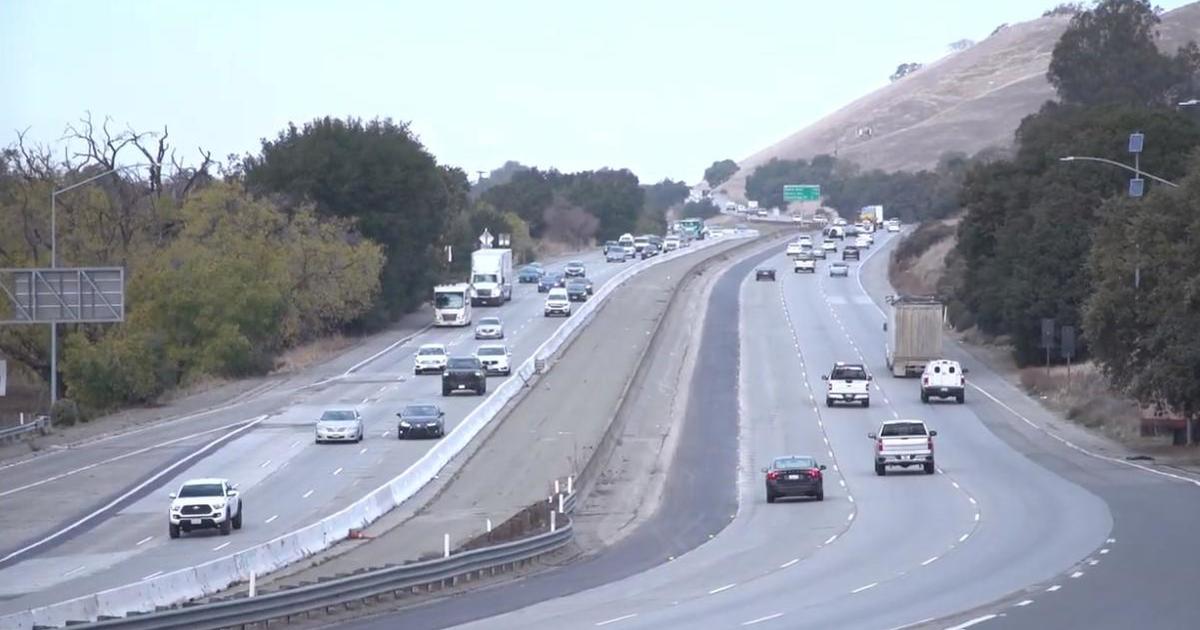COVID Surge: Newsom Sounds Alarm As Case Numbers Skyrocket; All Bay Area Counties Move Back Multiple Tiers
SACRAMENTO (CBS SF) -- Gov. Gavin Newsom on Monday announced that state health officials are "pulling an emergency brake" on California's COVID-19 pandemic response, increasing restrictions in 40 counties including the entire Bay Area as the state's daily cases doubled over the past 10 days.
State officials specifically addressed a number of counties in the Bay Area moving multiple tiers backwards in the state's risk-assessment system this week as case number spiked. San Francisco, Marin and San Mateo counties have moved to the Red Tier, while Alameda, Napa, Solano, Contra Costa, Santa Clara counties moved to the Purple Tier.
Sonoma County remained in the Purple Tier, where it has been since the system was introduced.
Governor Newsom cut to the chase quickly during his regular update on COVID-19, noting at the outset that the state was experiencing the fastest increase in cases since the pandemic began in March.
"Daily cases, though, in the state of California have doubled just in the last 10 days. This is simply the fastest increase California has seen since the beginning of this pandemic," Newsom said.
Previously, the fastest increase had taken place between June 15 and June 21 when cases jumped 39.2 percent. Newsom said that in the first week of November, California's COVID-19 cases saw a 51.3 percent increase.
The governor said the huge jump was leading state health officials to institute some immediate changes to California's Blueprint for a Safer Economy, noting that 40 counties would be moving backwards in the system this week with some counties moving back from the Orange Tier to the Purple Tier.
"We are now moving backwards, not forwards," said Newsom. "Last week was an early indication of some movement in a more restrictive direction."
Some of the immediate changes to the Blueprint for a Safer Economy tier system that Newsom outlined included:
- Counties will move back after one week, not two weeks
- Because of significant increases, some counties will move multiple tiers
- Counties that move back must make industry changes urgently, instead of 3 days, with phased enforcement
- California will assess tiers again mid-week
Newsom said the increasing case numbers are cutting across all demographics and all regions of the state.
"Every age group, every demographic, racial, ethnic, in every part of the state, we are seeing case rates increase and positivity rates increase as well," said Newsom. "No longer concentrated in just a handful of counties, we are seeing community spread broadly now throughout the state of California."
A total of 41 counties across the state will be in the Purple Tier with the state's latest update, covering a large portion of California and 94 percent of its population.
11 counties in the state were at the Red Tier, while only four remained at the less restrictive Orange Tier and two at the least restrictive Yellow Tier.
Dennis Dumas, co-owner of Omni Fight Clubs in the Tri-Valley, said the decision has forced him to move all of his gym's workouts outside. The changes in restrictions have been frustrating throughout the pandemic.
"It a little bit of anger and a little bit of fear and all of those things come rolling in," said Dumas. "We struggle mightily to understand how exercise and nutrition isn't essential."
"I think it's gonna suck for everybody that wants to get out and have fun, but I think it's going to be good for the population at large," said Jody Roane in Alameda. "I understand that the coronavirus only affects one percent of the population, but one percent of 350 million is a big number. It's helpful, but ain't nobody gonna like it."
San Francisco officials announced on Monday that non-essential offices would be forced to return to operating remotely while gyms and fitness centers would be required to return to operating at 10 percent capacity as the city struggled to keep transmission rates down.
Health and Human Services Director Dr. Mark Ghaly highlighted how widespread the increase in COVID cases was across the state.
"Just three weeks ago, we were talking about how we only had nine counties in purple. And many of you, together with your neighbors and communities, did a tremendous job to get transmission down. And all of those same approaches are going to carry us through the weeks to come," said Ghaly. "This rapid rise in cases, this significant change in transmission, not just in a couple of counties, not just in one or two regions across the state, but statewide. It is absolutely essential for us to immediately take control of and manage so that we get out of this difficult period."
Ghaly added that the reinstated restrictions of moving counties backwards one or more tiers would help reduce the transmission of the virus and prevent hospitals from being overwhelmed.
"Why are we, today, sounding this alarm, using our emergency brake? Because we must keep transmission low. And that is to avoid flooding the healthcare delivery system," said Dr. Ghaly. "Cases today will end up in our hospital beds in two to three weeks, consistently at a rate of about 12 percent."
Ghaly also once again stressed the importance of avoiding exposure and transmission during gatherings, especially with the holidays looming.
"We talk about household gatherings. But we know when people gather with people they don't live with, often our close friends, even family members, we think that it's okay to put your guard down," said Ghaly. "We think that it's okay to take off your mask, even for a little bit to enjoy your drink or enjoy your meal. But it's exactly those moments that create a high transmission risk."
Newsom noted that there are 11 surge centers at the ready throughout the state with ability to set up more in 24-96 hours to deal with the increasing case numbers. The current available hospital bed surge capacity is 1,872 beds. The state has maintained a large stockpile of personal protective equipment to provide hospitals and first responders.
"Over 522 million masks are in inventory, including surgical masks," explained Newsom. "You can get a sense of the effort with PPE in terms of the needs of first responders."
Newsom said the state would also lean on its continuously increasing capacity to test for the coronavirus and report results within 24-to-48 hours.
The state is currently averaging about 164,000 tests per day, and results from some 200,000 tests were reported Sunday.
Newsom suggested that the national wave of new cases has also bled into California to some extent despite the state having some of the strictest reopening guidelines in the country.
"There's an interdependence, there's a reality that stretches beyond the nation's largest state and 40 million Americans that live here," he said. "An impact that we're experiencing, not just across the country, but the impact and the transmission rates around the world."
"Clearly, we're not immune from those cycles," he said.
The governor said that officials were considering the institution of a curfew order in the future if cases continue to rise.
The commonwealths of Massachusetts and Virginia both have implemented statewide curfews in some form as well as various cities across the country.
Studies from France, Germany and Saudi Arabia have also shown the efficacy of curfews on reducing the virus' spread, Newsom argued, noting that state officials have not yet decided how to proceed.
"We have a lot of questions about what (a curfew) looks like, what that doesn't look like, who does it impact, who doesn't it impact, what does a real curfew mean in terms of just certain kinds of industry and business activities," he said.
Newsom also looked ahead and highlighted California's approach to the day when a vaccine becomes available.
"Rather than criticizing the [Trump] administration, rather than lamenting about what could or should be done, we engaged proactively and continue to engage proactively to make sure we have a plan for safe and equitable distribution of the vaccine...We've put together experts on committees, safety committee; in fact the Biden administration wisely took one of our safety committee advisors as part of his national COVID recovery plan - only good news for California - and by the way, there were a number of other Californians brought in by the Biden administration which will only reinforce our capacity of partnership with the new administration moving forward."
Newsom additionally offered another apology for a slip in his own behavior after attending a friend's birthday party at an exclusive wine country restaurant earlier in November.
Newsom has drawn criticism for attended a Nov. 6 50th birthday party for Jason Kinney, one of his political advisers, at the world-renowned French Laundry in Yountville. The party hosted more than 12 people from outside the household, which defies state guidelines on public gatherings during the pandemic.
While Newsom released a statement regarding the incident last week, Monday marked the first time he publicly addressed the situation.
"As soon as I sat down at the larger table, I realized it was a little larger group than I had anticipated," Newsom said Monday.
He went on to say he "made a bad mistake."
"Instead of sitting down, I should have stood up and walked back and got in my car and drove back to my house," explained the governor. "Instead, I chose to sit there with my wife and a number of other couples that were outside the household. You can quibble about the guidelines ... but the spirit of what I'm preaching was contradicted. And I've got to own that."



